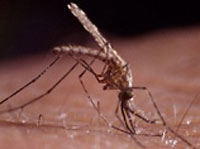Chikungunya and other previously unknown diseases may conquer the world
Developing countries may become the source of previously unknown epidemics, a recent report from Trust of America’s Health said. Over 170,000 Americans die from outbreaks of new or forgotten infections, some of which come to the USA from abroad.

The administration of Google.org, a charitable division of Google, believes that the threat of new infections is highly important nowadays. The organization has already assigned $15 million to epidemiologists. Google’s goal is to find the hotspots, where new infections may emerge, to discover and study new microbes, and to create early prevention systems in developing states so that local authorities could take efforts to subdue the outbreaks before they could take a global scale, the USA Today reports.
Larry Brilliant, the executive director of Google.org, said that the probability of pandemic diseases may rise against the background of the global economic crisis, as many counties would be forced to cut their healthcare spending.
Chikungunya, viral fever, may become the next epidemic to reach the United States. This word translates from Makonde, an African language, as “bends up.” Chikungunya is a mosquito-borne disease. Its symptoms are similar to those of severe flu, although a person infected with chikungunya may suffer from the disease for life.
The infection was spread from East Africa to islands in the Indian Ocean, where 266,000 people fell ill with the disease, and 255 of them died. Afterwards, the virus continued to conquer the Indian subcontinent and infected over 1.5 million people, of whom up to 90,000 died. The virus currently moves across South-East Asia, where it has already adapted to tiger mosquitoes, which inhabit the United States too.
In August, chikungunya emerged in the province of Ravenna, Italy, where local tiger mosquitoes spread the infection from a resident of South India, who had come to Italy to visit his relatives. Over 250 people were infected as a result.
Dangerous and lethal infections can conquer the present-day world speedily. For example, the notorious SARS virus was spread throughout the world in only 1.5 months. Over 8,000 people were infected with the virus, 755 of them died.
One should bear in mind the fact that new infectious diseases appear on a regular basis, although modern medicine considers them a matter of the past. Legionary disease, avian flu, salmonella, AIDS and several new forms of tuberculosis have made countless headlines during the recent years.
Infectious diseases kill about 57 million people a year, which makes 26 percent of the global death rate. AIDS, TB and malaria kill 6 million people altogether. The death rate will be a lot higher in case of pandemia.
Lassa fever, Rift Valley fever, Marburg virus, Ebola virus and Bolivian hemorrhagic fever are highly contagious and deadly diseases, with the theoretical potential to become pandemics. Their ability to spread efficiently enough to cause a pandemic is limited, however, as transmission of these viruses requires close contact with the infected vector. Furthermore, the short time between a vector becoming infectious and the onset of symptoms allows medical professionals to quickly quarantine vectors, and prevent them from carrying the pathogen elsewhere. Genetic mutations could occur, which could elevate their potential for causing widespread harm; thus close observation by contagious disease specialists is merited.
Subscribe to Pravda.Ru Telegram channel, Facebook, RSS!





